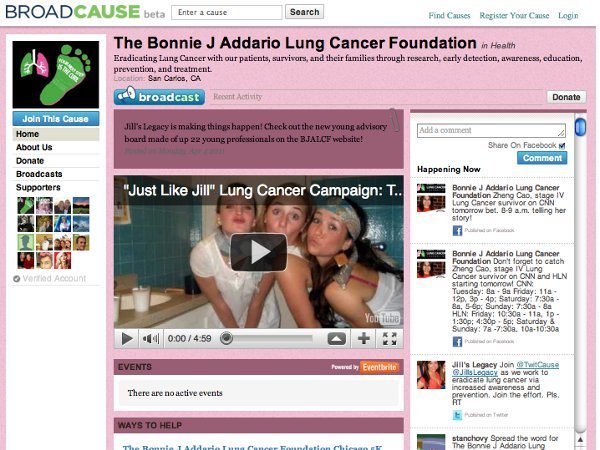

The site’s participants are an interesting blend of Internet users, non-profits, and brands. So how do you make all of those people happy at once? You find the right balance, which starts with the users you want to draw in.
The site comes fully equipped with a searchable database where users can find the causes that interest them the most, as well as a breakdown of organizations and causes by category, including education, animals, arts & culture, health, human services, environment, public advocacy, political campaigns, and international issues. Once a user creates an account, he/she can aggregate all of the causes that interest him/her, follow them to get updates on events and campaigns, and share their information across Facebook and Twitter.
The obvious question is, what’s in it for the organizations? Why not take to Facebook and Twitter themselves? That’s what I asked Peter Jackson, CEO of Experience Project.
“It would be an arduous process,” said Jackson in a phone interview. “They wouldn’t already have the audience and the tools ready to go.”
He explained that the attraction BroadCause has for organizations is the fact that not only is there an audience already established and engaged, but the site comes with a full dashboard for managing all of their social media campaigns and events. BroadCause has also teamed up with Eventbrite to allow organizations to manage ticketing for their events.
The site’s audience comes from Experience Project’s user base, which means they’re already poised to engage in a deeper and more meaningful way with campaigns on BroadCause. Experience Project allows users to share and connect over life experiences and interests. For example, users can share stories of being adopted, growing up Catholic, growing up in poverty, etc., and other users can comment on and discuss the experience, possibly sharing their own similar experiences in the process. That type of engagement is significant, as the average user visits the site for 25 minutes a day and is involved in 25 different groups, so take those users and transplant them to BroadCause, and you have yourself a target audience ready to go.
So how did Experience Project lead to BroadCause? As Jackson tells it, the whole story of Experience Project and BroadCause was a natural evolution. Experience Project was itself originally founded as a sort of cause-based support group for people living with Multiple Sclerosis. But, as it turned out, people with Multiple Sclerosis also liked other things and the “support group” eventually evolved into a social platform. That eventually led to TwitCause, which would take a brand-sponsored cause and highlight it for a week. Using the Experience Project’s user base, TwitCause garnered a huge following and often out-marketed a major celebrity who was also tweeting on the same cause.
And voila, BroadCause is born.
“Causes in the past were more reactive,” said Jackson. “You got an envelope in the mail, put money in it, and sent it back. But the social graph creates an infinite awareness among your audience; it creates a desire to participate and volunteer.”
A number of non-profits are already using the platform, as are brands, who are seeking to highlight their social good activities by teaming up with the site to sponsor organizations and causes. Walmart, for example, is the largest contributor to causes in America (like combating obesity–who knew?), but the company has no way to broadcast that, so its activities often go unnoticed. By connecting with non-profits on BroadCause, brands can get the image enhancement they want while sending more dollars to noteworthy causes. And users benefit by having thousands of causes to browse among when selecting the ones they most want to support.
Currently, the company is working with a number of brands and has contracts with several, including Microsoft, United Way, and American Express, among others. Sounds like a winning combo.


















